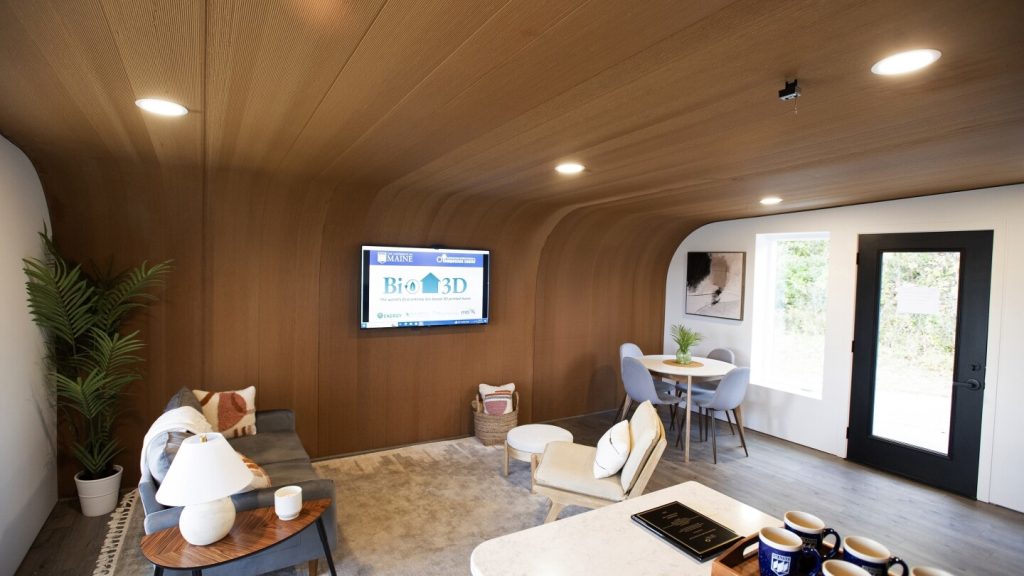The University of Maine has introduced the world’s largest 3D printer, capable of creating houses and potentially entire neighborhoods in the future. The new printer, dubbed “Factory of the Future 1.0,” is four times larger than the original printer commissioned five years ago. It utilizes bio-based materials and aims to address homelessness by providing affordable housing options. The university plans to break ground on a new building this summer to accommodate even larger printers and further research in collaborative robotics, sensors, computing, and artificial intelligence.
Representatives from various government departments and stakeholders attended the unveiling of the massive printer at the University of Maine. The printer can create objects up to 96 feet long, 32 feet wide, and 18 feet high, consuming up to 500 pounds of material per hour. The original printer, certified by Guinness World Records as the largest polymer 3D printer, was used to construct a 600-square-foot home made of wood fiber and bio-resin materials. With Maine needing an additional 80,000 homes in the next six years, the university aims to showcase how 3D printing technology can revolutionize the construction industry and address the shortage of affordable housing.
There is a pressing need for affordable housing and skilled workers in the construction industry, prompting the University of Maine to explore 3D printing as a solution. The new printer allows for the construction of homes with a lower carbon footprint, as traditional building methods account for a significant portion of global greenhouse gas emissions. By using materials that can be recycled, such as bio-based feedstocks from wood residuals abundant in Maine, the university hopes to set a new standard for sustainable construction practices. The goal is to create homes that are not only environmentally friendly but also aesthetically appealing and desirable for residents.
Researchers are looking towards the future by experimenting with different materials for the 3D printer, expanding its capabilities beyond just housing construction. The technology has already been used to create boats and structures for the defense department. The original printer will continue to be utilized alongside the new printer, allowing for more efficient manufacturing processes. By working together on projects, the printers can streamline production and potentially lead to the creation of entire neighborhoods. The University of Maine is at the forefront of innovation in the construction industry, showcasing the potential of 3D printing technology to revolutionize the way we build structures in the future.


